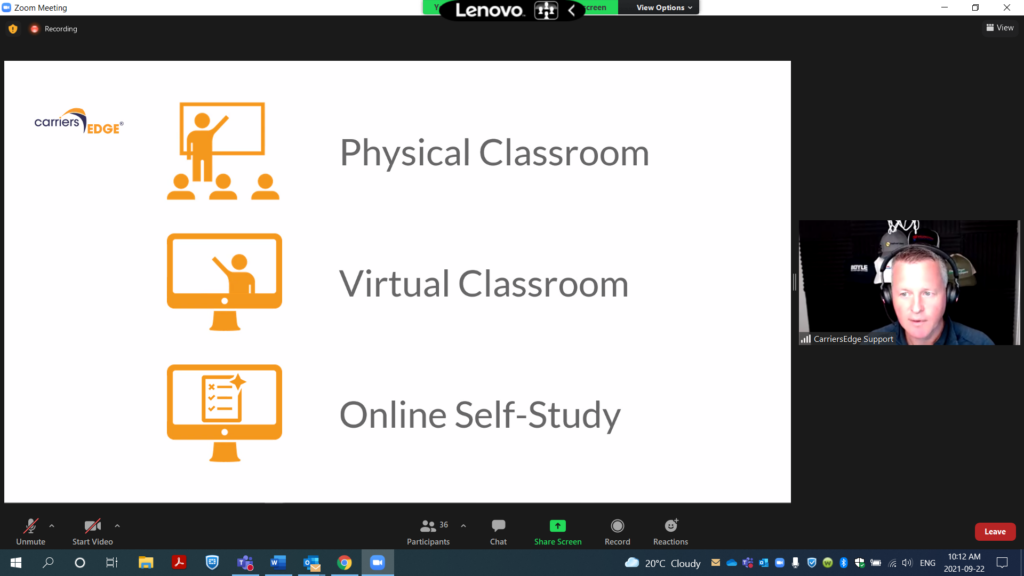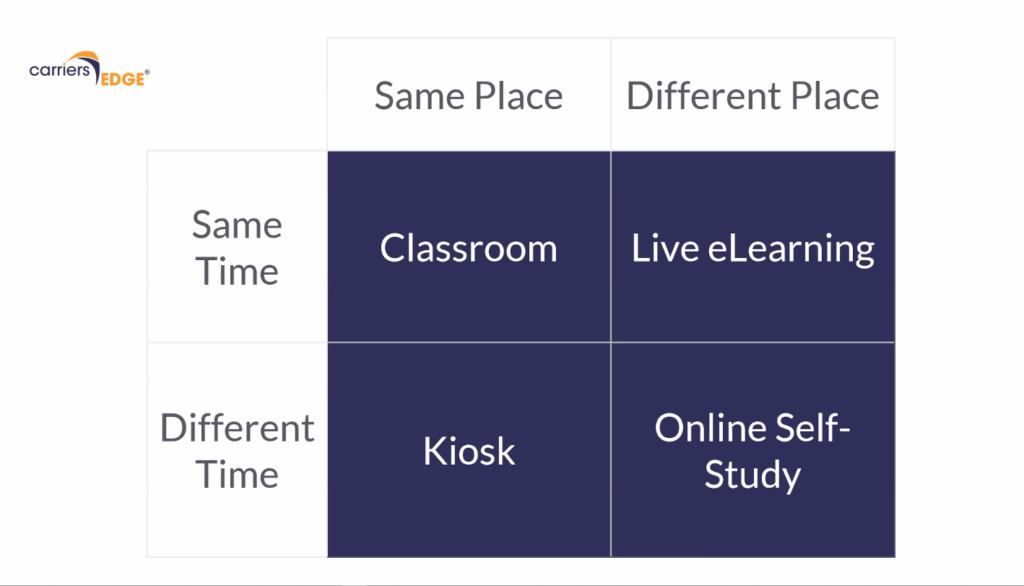Blended approach helps achieve driver training goals
A combination of physical and virtual classrooms and online self-study will help companies achieve their driver training and development goals, a customer experience professional said Wednesday.
A blended approach allows instructors and trainers to make most of their content, said Chris Henry, vice-president of customer experience at CarriersEdge, at an online webinar hosted by PMTC (Private Motor Truck Council of Canada).

Henry said the Covid-19 pandemic has forced the hand of companies that were hesitant to move training online. In-person training is being reincorporated as things slowly get back to normal, but going back to in-person only, will not serve a company well, he said.
PMTC president Mike Millian who moderated the webinar said even those carriers that were not in favour of virtual training were forced to use it.
A decision-making matrix can be used to plan training, Henry said.
An in-person class works best if all the people are in the same place at the same time and a kiosk system is beneficial if people go to same place at different times, like a driving simulator or a virtual reality environment.

Live e-learning helps deliver content via platforms like Zoom or Teams using pre-scheduled sessions and online self-study can be taken by trainees whenever they wish, at different times and places.
Henry said he never advises companies to get rid of any of these formats as all are necessary to have an effective training plan. Every method has its strengths and weaknesses, Henry said.
In-person classrooms are conducive to collaborative learning via group exercises, brainstorming and discussions. Specialized content can be delivered in a cost-effective manner. Also, a multilingual instructor can relay information in a driver’s native tongue, leading to more retention.
On the flip side, in-person training can be costly and disruptive. In the private fleet market, it could shut or slow down supply lines. To combat this, sessions are typically delivered around holidays, taking away drivers’ time from their families.
Trainees are at the mercy of the instructor’s pace that doesn’t allow for leeway. Content absorption is also slow. For example, a dangerous goods course that could take a day in class could be completed faster in an online environment.
Pandemic-proof
Virtual classrooms don’t require travel and are pandemic-proof. They can accommodate specialized content, and if something new develops, it can be added quickly.
Virtual learning also suffers from slow content absorption and one pace that rules all. It is also less collaborative. People sometimes do different things while on the call and it is harder to maintain engagement as social cues present in a physical room are absent in a virtual format.
Online self-study is flexible and non-disruptive, self-paced and can commence at any time while subject to a deadline. It offers individualized pacing and fast content absorption. But there is no collaborative learning, and the content is generalized. Audio, video, and interactive exercises require time to be developed.
When Millian asked what missteps carriers make in online training, Henry said expectations must be tempered and strategy must be established.
“It’s like a kid in a candy store and is very easy to go overboard, trying to deliver too much content in too short a time,” he said.
Questions spur activity
Henry said sharing anecdotes ensures success in an in-person classroom. Asking questions spurs activity and provides feedback.
Leave the classroom, if possible, he said. For example, if the training is about inspections, head out to the yard. Theory can be offered before people enter the classroom, maximizing training time.
For virtual classrooms, avoid death by PowerPoint, use less words and focus on visuals – more videos and icons. And don’t be monotonous as people will become disengaged, Henry warned. For online self-study, allow time for completion of training and ensure equal access.
“If you treat people like professionals, they will act like professionals.”
Chris Henry, VP of customer experience at CarriersEdge
Henry was asked how it would be possible to verify if a person is undergoing online training.
“If you treat people like professionals, they will act like professionals,” he said. There are no visual checks but start and end times and IP addresses are tracked.
There are various ways to ensure training success. Firstly, ensure trainees undergo online training before entering the classroom. Then content can be targeted on aptitude and capabilities. For example, during forklift training, practical activity can follow online training. Also, for transportation of dangerous goods or winter driving, training can be offered online one year and in class the next, to keep it fresh.
Nothing beats one-on-one conversation, Henry concluded. Instructors can bring up specific issues and carry out targeted training.
Have your say
This is a moderated forum. Comments will no longer be published unless they are accompanied by a first and last name and a verifiable email address. (Today's Trucking will not publish or share the email address.) Profane language and content deemed to be libelous, racist, or threatening in nature will not be published under any circumstances.